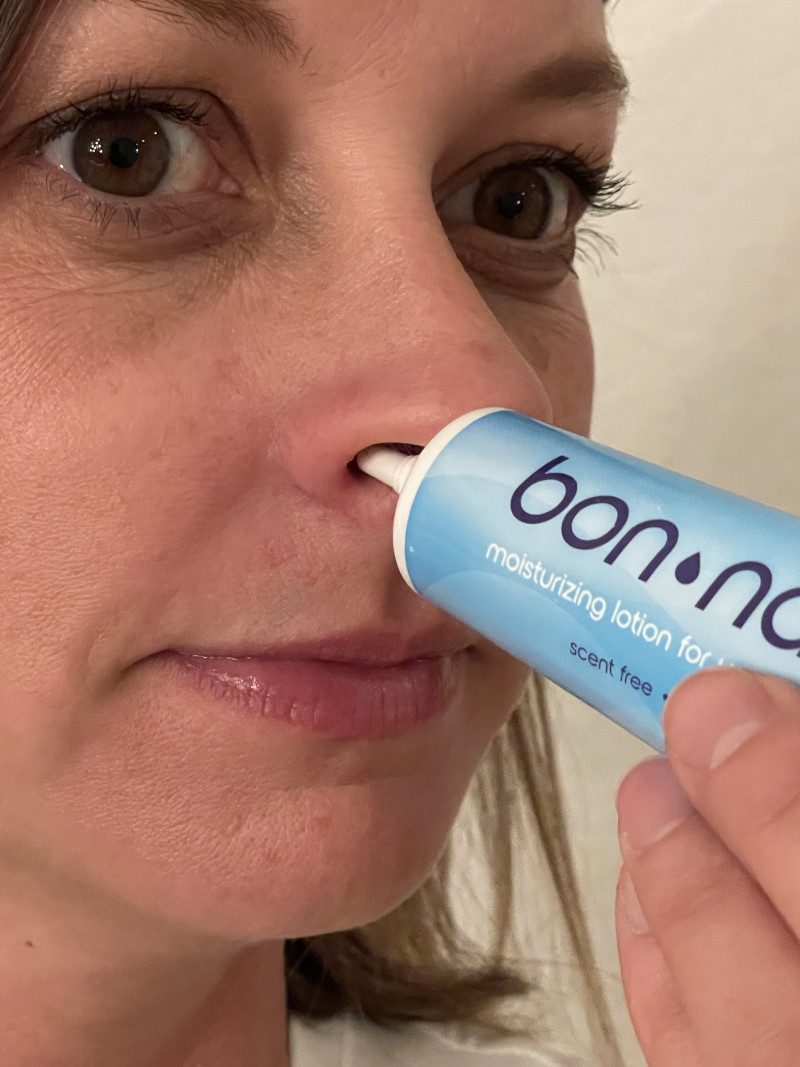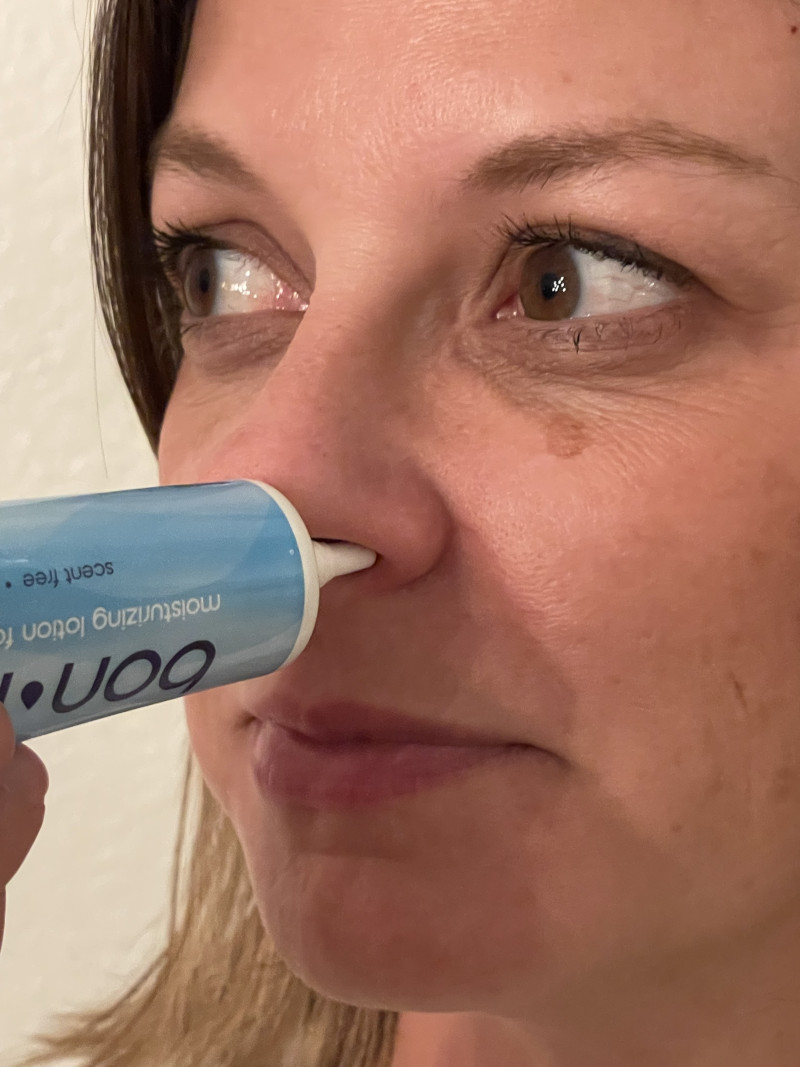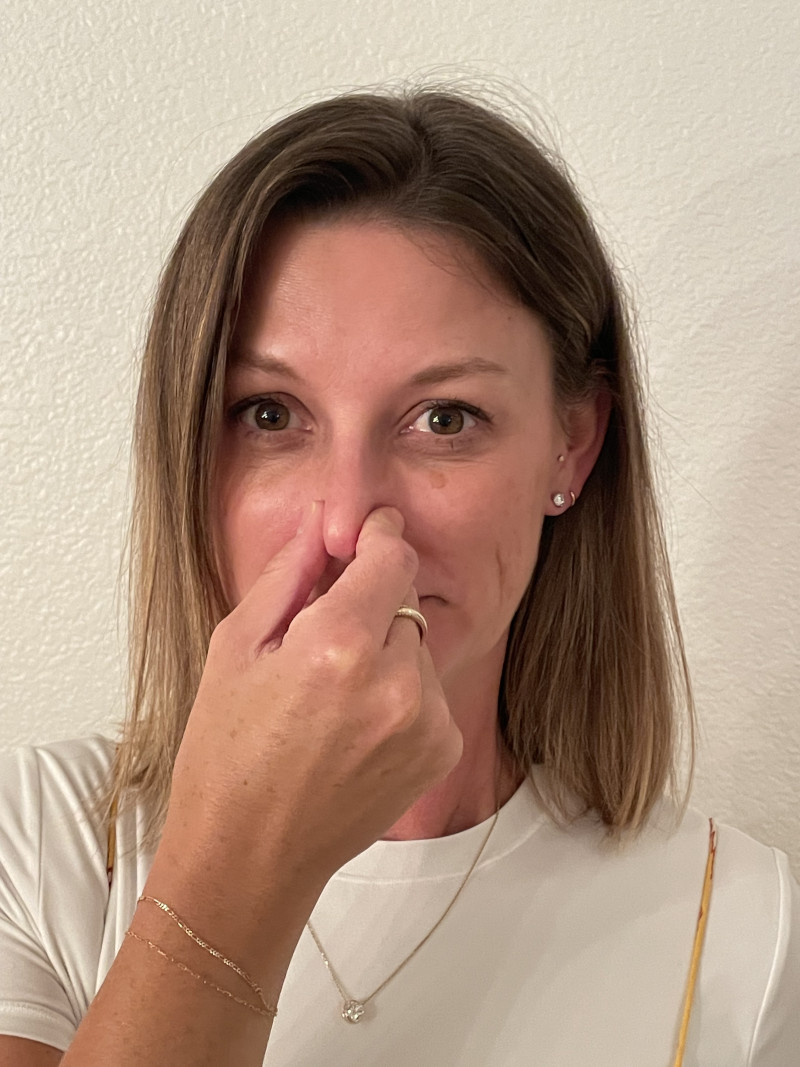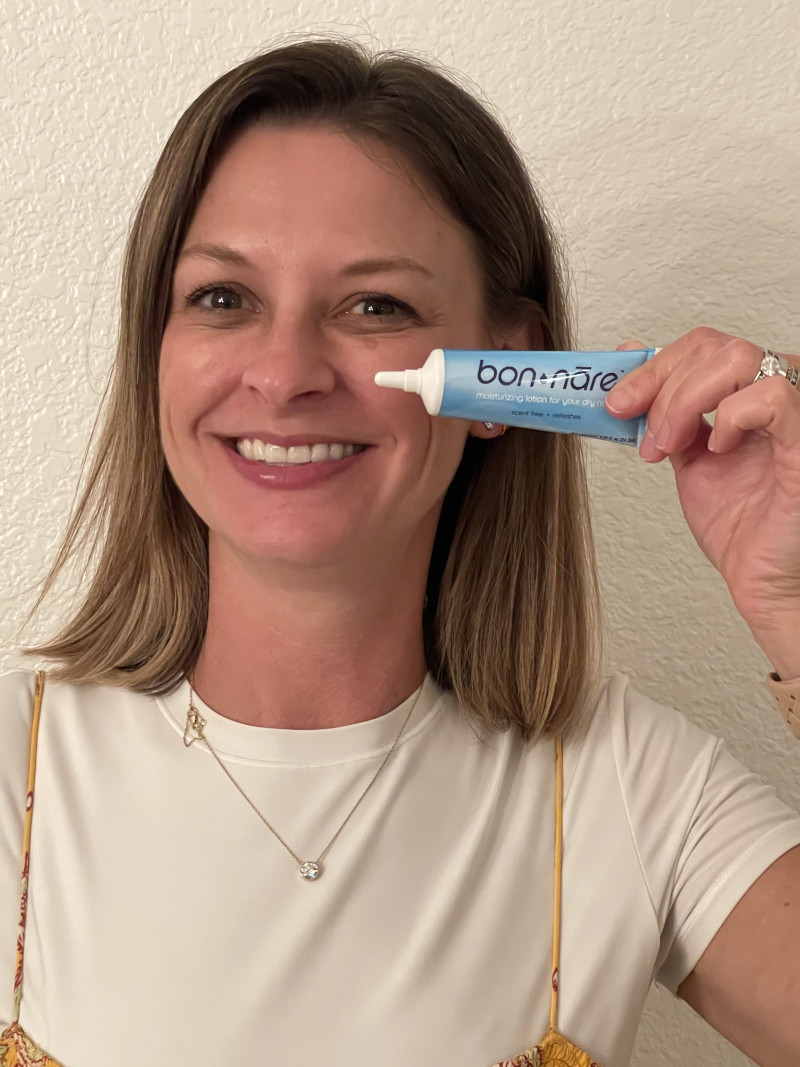LEARN ABOUT THE NOSE AND A GOOD WAY TO STOP A NOSEBLEED
Why does the nose tend to get dry, irritated, and form crusts?
Part of the nose’s function is to humidify incoming air. In doing so, it loses moisture to the incoming air. The air is well humidified by the time it reaches the back half of the nose. Thus, it is only the front part of the nose that generally tends to dry and crust – and that is where BON-NARE is intended to help your nose.
What is the best type of product to help relieve dryness and crusting in the nose?
Oftentimes, people think that saline spray or irrigation will moisturize the nose. However, saline spray only wets the nose and then dries quickly. Saline irrigation will cleanse the nose, but still dries quickly. Just as skin needs a lotion for moisturization, your nose needs a lotion (specifically designed to moisturize the nose): BON-NARE. Also, people apply saline gel to their nose. The gel will coat the nose and may prove helpful – but it will not moisturize the nose. Some people apply petrolatum (petroleum jelly, ointment) or olive oil to their nose for the same purpose. However, these products only grease or oil the nose without moisturizing it. Again, BON-NARE moisturizing lotion is the answer. Trying all of these types of products on your skin will provide a demonstration. You will find that only BON-NARE will be absorbed, moisturizing your skin. By the way, BON-NARE may be used on the skin around the outside of your nose when the nose is irritated by frequent blowing during allergy season or when you have a cold.
What causes the most common type of nosebleed (epistaxis)?
The exact cause for an individual’s nosebleed is not generally clear. However, contributing risk factors are likely septal deviation, oxygen therapy delivered by nasal cannula (even with a water bubbler attached), and day-to-day dryness. Risk for a prolonged nosebleed may be associated with high blood pressure or with taking anticoagulants (“blood thinners”), like warfarin. You can consider for yourself whether a dry, crusty nose is more likely to bleed than a nose with moisturized, healthy lining tissue (mucosa).
What part of the nose is the most likely source of the bleeding in nosebleed (epistaxis)?
The great majority of nosebleeds occur on the middle divider of the nose (septum) toward the front of the nose: that is, in the area that is compressed when you pinch your nostrils together—even when you have a strong perception that the bleeding is coming from “high up” or “way back” in the nose.
If I have a nosebleed (epistaxis), what is a good way to stop it?
An efficient method is (please follow the directions exactly):
- Begin with a cotton ball of appropriate size (you may have to pull the cotton ball apart) to fit snugly inside the bleeding nostril.
- Dampen the cotton ball with decongestant spray (such as oxymetazoline, brand name: Afrin).
- Place the dampened cotton ball inside the bleeding nostril. Do not push it “way up” or “way back”.
- Broadly pinch the nostrils together continuously for 10 full minutes by the clock.
- If the bleeding has stopped, leave the cotton ball in place overnight. Remove it the next morning.
- If the bleeding has not stopped, pinch the nostrils together for another 10 minutes continuously. If the bleeding still has not stopped, then call your doctor or go the hospital emergency department.
Tips:
- Do not push the dampened cotton ball “way back” or “way up” into the nose: 95% of nose-bleeds occur on the front portion of the septum (middle divider of the nose), where compression of the nostrils provides the best chance to stop it.
- Pinching the bony part of the nose, just the bridge of the nose, or the very tip of the nose will not help.
- Keep your head and shoulders higher than your waist while stopping the nosebleed, as well as through the night.
- After the cotton ball is removed the next morning, begin BON-NARE application to the nostrils four times daily for one week (to allow healing), then at least once daily for maintenance of healthy nasal mucosa. If you still have recurring nosebleeds, then see a doctor.
I get nasal irritation and blood from my nose when I use a topical steroid spray (brand names: Flonase, Nasacort AQ, Rhinocort, Nasonex). Would BON-NARE help me?
Yes! By moisturizing your nose with BON-NARE after each steroid nasal spray application, you will likely tolerate the nasal spray quite well. Then you will be able to achieve the benefits of the topical nasal steroid spray.




